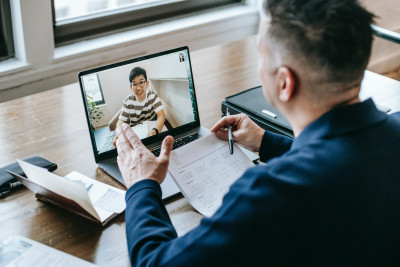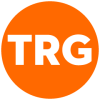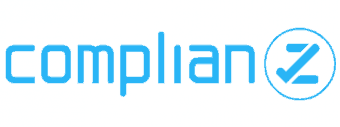Managing and Mentoring the Next Generation of Health Care Public Relations Professionals

COVID-19 has turned our workplaces upside-down, creating a remote/hybrid office environment that has changed when and where we come to work. At The Reis Group, we have also come to fully realize that we must also change how we work with each other. In our case, TRG has converted to a Tuesday-Wednesday in-office schedule, with everyone otherwise working from home, using Teams and Zoom to do our work and keep in touch as a team.
But in my role as a Senior Vice President and account lead, I’ve come to understand that this hybrid world creates entirely new challenges about how we manage and mentor the next generation of professionals in health care public relations. Lately, I’ve been pondering these questions a lot, particularly since I’ve been working remotely myself for many years and have experienced first-hand how this alters relationships in the workplace.
I’m asking myself how do we, as managers, create an atmosphere to allow our colleagues to thrive in this new remote/hybrid environment? How can we continue to mentor, lead and cultivate those crucial relationships and connections that create strong teams? How can we carve out opportunities to grow relationships with our team? How can we provide feedback and ensure it is delivered in an appropriate, effective way? How do we create an atmosphere of mutual trust, respect and direct communication so that we feel kept in the loop, but are not perceived as micromanaging?
So, I decided to interview my own colleagues, along with some of TRG’s clients, to get their ideas about how we can make sure that as we reinvent when and where we work, we never lose sight of the fact that the heart of our work is all about maintaining important relationships. In these conversations, three major themes emerged:
- Communication is more important than ever.
- Investing in relationship building is crucial.
- Setting intentional roles promotes engagement and growth.
Communication is key.
Becky Armendariz, Associate VP of Marketing & Public Relations at Banner Health in Phoenix, says she pays attention to this issue more closely than ever: “My team members know that they can call, text, IM, or email me any time they need to reach me. I will respond as quickly as possible — prioritizing them over other projects or requests in my queue — because I never want to be the reason that my team members can’t do their jobs. It’s extremely important to me that they have what they need to work autonomously and productively remotely to meet their deadlines.”
At TRG, our Account Directors hold weekly check-in meetings for each account they manage to ensure team members are apprised of what is going on with the client and what the short- and long-term priorities are. These meetings allow team members to ask questions, suggest ideas and provide an opportunity to carve out roles on the account.
Our founder and principal, Sharon Reis, is very purposeful about meeting regularly with Account Directors and the account team to allow a space for checking in on workloads, discussing office culture and industry trends, and brainstorming ways to better serve our clients.
“Our monthly check-ins with Sharon establish a productive atmosphere for important conversations about the firm, the team and the industry. These interactions provide a needed space for connection and collaboration, which ultimately help me do my job better,” says TRG’s Senior Vice President, Kathleen Petty.
Investing in relationship building is crucial.
More than ever, it’s clear that team members want to feel heard and valued. They want to know their colleagues are understanding and empathetic about what is going on both during and outside of working hours. They want to know the team is there to support them. But it’s important to remember that building these connections takes time, effort and sensitivity.
“Three years ago, I started a new job, in a new field, leading a new team in a fully remote environment. I knew I had to work fast to gain their trust, to learn my own job, and to provide leadership and supervision,” says Rachael Kagan, Director of Communications and Public Affairs at Blue Shield of California Foundation. “Counterintuitively, that required a bit of slowing down. Since the personal moments were not going to happen organically, I had to build them into the agenda. Suddenly, ice breakers and check-ins became a huge part of every meeting. It wasn’t perfect, but over time it did start to make a difference and allow for connections to happen.”
At The Reis Group, we recently established a new mentoring program to pair new team members with a veteran team member known as their “Reis-source.” This program creates one-on-one engagement and allows team members to learn directly from someone who has recently walked in their shoes. We are also holding monthly “Ask Me Anything” sessions during lunch when we are in the office. The selected moderator for each session sets the agenda and develops questions to spark discussion around both work and personal topics.
Beth Casteel, Senior Counselor at TRG says, “When we first started working at home in the pandemic, I made it a point to try to recreate moments that happen organically in the office: A quick hello in the morning with a fellow early riser, randomly grabbing five minutes to chat with different team members over Teams – like you might start a hallway conversation in the office. Continuing this practice has helped me get to know new staff members and lets everyone know my virtual door is always open.”
Setting intentional roles promotes engagement and growth.
The virtual atmosphere can make natural conversation technically difficult. Delays and blips between unmuting and trying to speak results in folks missing each other’s points and unintentionally interrupting. Virtual communication requires more planning and intentionality.
Jessica Duncan, vice president of communications at the American Gastroenterological Association, says she’s gotten more purposeful about designing her team meetings to ensure that everyone contributes. “Each monthly team meeting has three sections – an ice breaker, a learning session, and a case study,” she says, “Responsibilities for each section rotate among the team members and everyone has a lot of latitude to develop the content for the discussions they lead. I’ve found that being purposeful about the time we spend together as a team and ensuring that everyone has a voice and a role helps to build bonds when we’re not physically in the same space daily.”
At TRG, we have overhauled our professional development program to do this as well. To allow for reverse mentoring and for junior team members to stretch their skills, we work with each team member to pick a topic that excites them to present to the team. Whether it’s the latest in health policy and its potential impact on our clients, SEO tips, or the latest in artificial intelligence, each team member prepares a session and shares their learnings with the group. This format allows the double benefit of practicing presentation skills and sharing new learnings to keep the team on the forefront of both health care and public relations.
“As a young PR professional, I’ve quickly learned that to be successful in the industry, you need to master two things: knowing how to engage your audience and presenting your message in a clear and confident way. Our professional development program has enabled me to hone those skills and has directly benefitted my interactions during client meetings,” says Tiana Ware, Senior Account Executive at TRG.
What does the next generation of health care public relations professionals want from its managers and mentors?
It’s vitally important that our senior leadership remains deeply engaged in how best to support the team, but it’s equally important to listen closely to what the next generation of health care public relations professionals want from their managers and mentors.
Sean Logan, a senior marketing and public relations specialist at Banner Health, says “I’m looking for someone who listens well and genuinely cares about how they can help me to grow and improve beyond the everyday work questions I may ask. My leader has done an exceptional job emulating these qualities, which has helped make working remotely an afterthought rather than something that is a cause for headaches.”
Krysten Massa, Senior Communications Associate at Blue Shield of California Foundation has worked with several managers throughout her time at the foundation with one of them starting during the pandemic when the office was entirely remote. “It is really important for me to have a personal connection with my manager. When we were remote, these connections did not happen organically,” she says. “My manager took the time to facilitate conversations that allowed us to not only discuss current work activities, but career growth and life in general. Her investment in making sure that we had a good relationship and in getting to know me as a person first and an employee second has really helped me thrive.”
When determining how to best manage and mentor the next generation of health care PR professionals, we are listening and learning together. In one recent Harvard Business Review article, someone likened remote managing to learning to drive on the wrong side of the road. You must get to the same destination, but you now have different signals, cues and controls. I think this is an important analogy. What worked five or more years ago won’t necessarily resonate today. It’s important that we all invest the time to adapt the way we engage with each other so that everyone feels supported and is set up for success.




